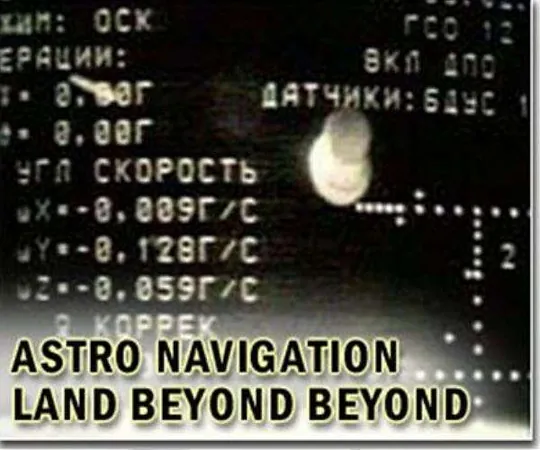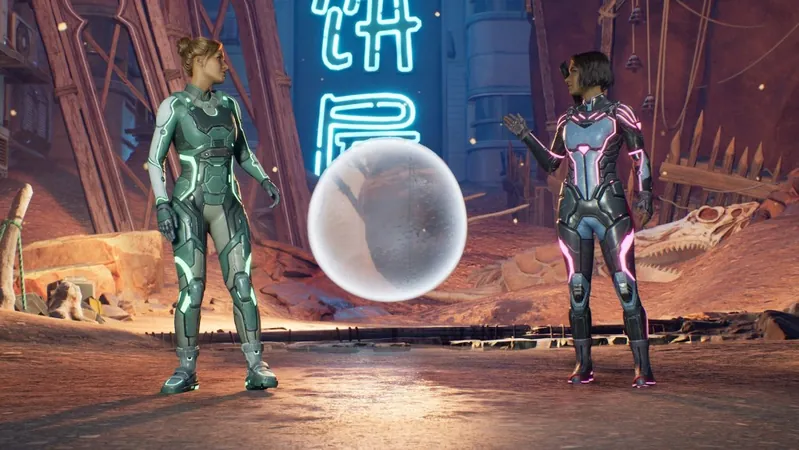
Hera Spacecraft Breaks New Ground in Autonomous Navigation During Historic Mars Flyby
2025-03-30
Author: Arjun
The European Space Agency's (ESA) Hera spacecraft has made a significant leap in space exploration technology, successfully conducting its first-ever test of autonomous navigation as it flew past Mars. This groundbreaking test involved the spacecraft's ability to identify and track geological features on the Martian surface, laying the groundwork for its future operations around two asteroids, Dimorphos and Didymos.
Significant Milestone: Mars Flyby
On March 12, 2025, Hera executed a close encounter with Mars, coming within 5,700 kilometers of the planet. This close flyby was not just a routine maneuver; it utilized Mars' gravity to navigate more efficiently toward its ultimate goal—the binary asteroid system, Dimorphos and Didymos. ESA officials reported that this gravity-assist method not only saved crucial fuel but also shortened the spacecraft's travel time by several months.
Innovative Navigation Tests
During the flyby, Hera's advanced autonomous navigation system was put to the test for 20 exhilarating minutes. Despite traveling at incredible speeds and being significantly farther from Mars than it will be from its asteroid targets, the spacecraft proved its capabilities by locking onto numerous surface features including craters and distinctive geological formations. Using the Hera Asteroid Framing Camera, it captured one image every 48 seconds—an unprecedented feat in autonomous navigation technology.
“Tracking unmapped features demonstrates a significant advancement beyond prior attempts that utilized known landmarks,” stated Jesus Gil Fernandez, ESA's guidance, navigation and control engineer. The risks associated with this untested technology were palpable; a malfunction could have compromised the entire science mission. Thankfully, Hera performed efficiently, garnering confidence for its upcoming challenges in asteroid navigation.
Scientific Contributions
This encounter not only tested the unique navigation capabilities of the spacecraft but also showcased its suite of scientific instruments, providing detailed images of Mars and its moons, Deimos and Phobos. The experimental technology, developed by teams from GMV in Spain and Romania, emphasizes the importance of advanced onboard intelligence in modern space missions.
Future Operations
In the upcoming phases of the mission, Hera will maneuver within just 2 kilometers of Dimorphos, demanding precise navigation through autonomous systems as it analyzes crater formations resulting from NASA’s DART mission. The advanced navigation technology will allow Hera to compare images of surface features, efficiently determining its position relative to the asteroid without pre-existing maps.
Andrea Pellacani, technical manager at GMV, highlighted the rigorous preparation leading up to this moment. “We replicated Martian conditions through simulations and confirmed our system’s effectiveness before launch. The actual flyby presented exactly what we anticipated in simulations, proving the robustness of our experimental tracking technology.”
High Precision and Capability
Hera’s capabilities allow it to identify and track up to 100 unique surface features simultaneously; however, for computational efficiency, only the top six are used for navigation calculations. This ensures that the system remains efficient while still being capable of high-precision navigation.
Looking Forward
According to mission manager Ian Carnelli, the advancements achieved with Hera signal promising avenues for future space endeavors. “Our technology could revolutionize autonomous operations for lunar and planetary landings, opening doors to a variety of ambitious missions.”
After launching on October 7, 2024, Hera is now on a trajectory to become a pivotal instrument in planetary defense against asteroids. By studying the consequences of the DART mission, Hera aims to gather vital data that could make asteroid deflection a dependable method for protecting Earth from potential disasters. This mission is not just a leap in technology; it’s a bold step towards safeguarding humanity’s future in space.


 Brasil (PT)
Brasil (PT)
 Canada (EN)
Canada (EN)
 Chile (ES)
Chile (ES)
 Česko (CS)
Česko (CS)
 대한민국 (KO)
대한민국 (KO)
 España (ES)
España (ES)
 France (FR)
France (FR)
 Hong Kong (EN)
Hong Kong (EN)
 Italia (IT)
Italia (IT)
 日本 (JA)
日本 (JA)
 Magyarország (HU)
Magyarország (HU)
 Norge (NO)
Norge (NO)
 Polska (PL)
Polska (PL)
 Schweiz (DE)
Schweiz (DE)
 Singapore (EN)
Singapore (EN)
 Sverige (SV)
Sverige (SV)
 Suomi (FI)
Suomi (FI)
 Türkiye (TR)
Türkiye (TR)
 الإمارات العربية المتحدة (AR)
الإمارات العربية المتحدة (AR)